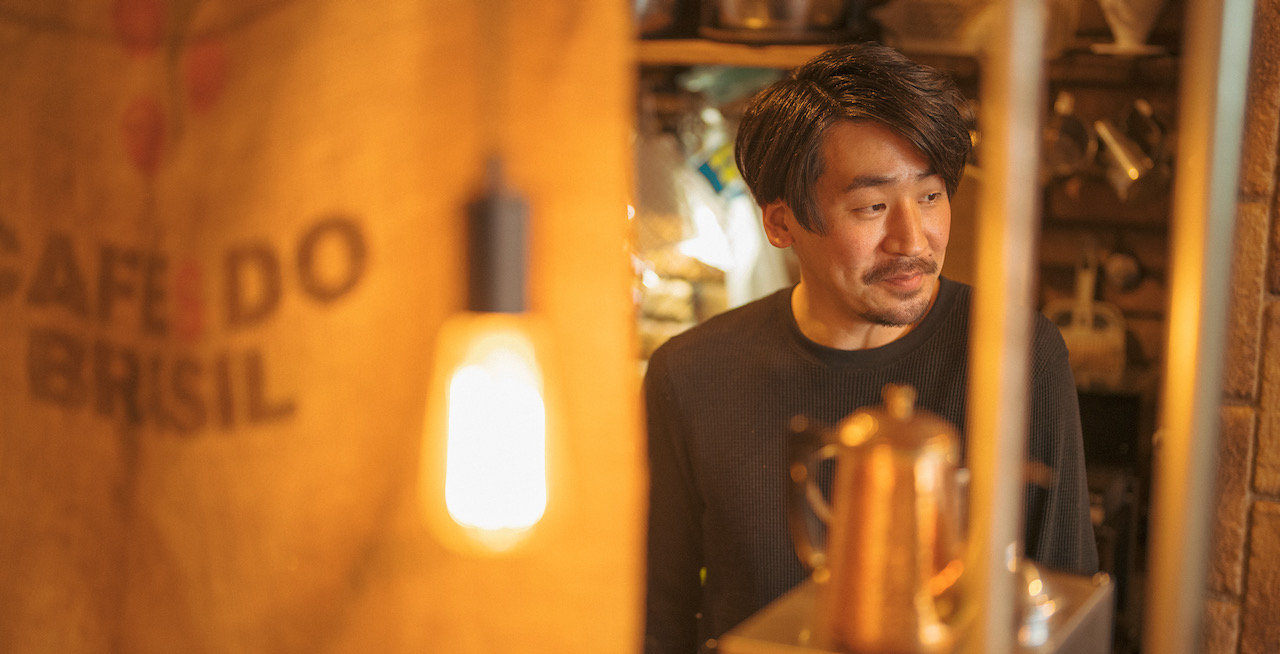
A popular coffee specialty store that offers more than just coffee. The owner’s “luxurious” concern.

kawakami coffee roaster is a coffee shop that roasts coffee in-house in a residential area of Suita City in Osaka. The shop has a counter with only six seats and is so popular that customers make a line to enter the shop even on weekdays. The shop also offers handmade sandwiches and baked goods. We interviewed owner Mr. Hiroo Kawakami who says, “I am happiest when people say the coffee is delicious.”
※ Titles in the text are omitted.
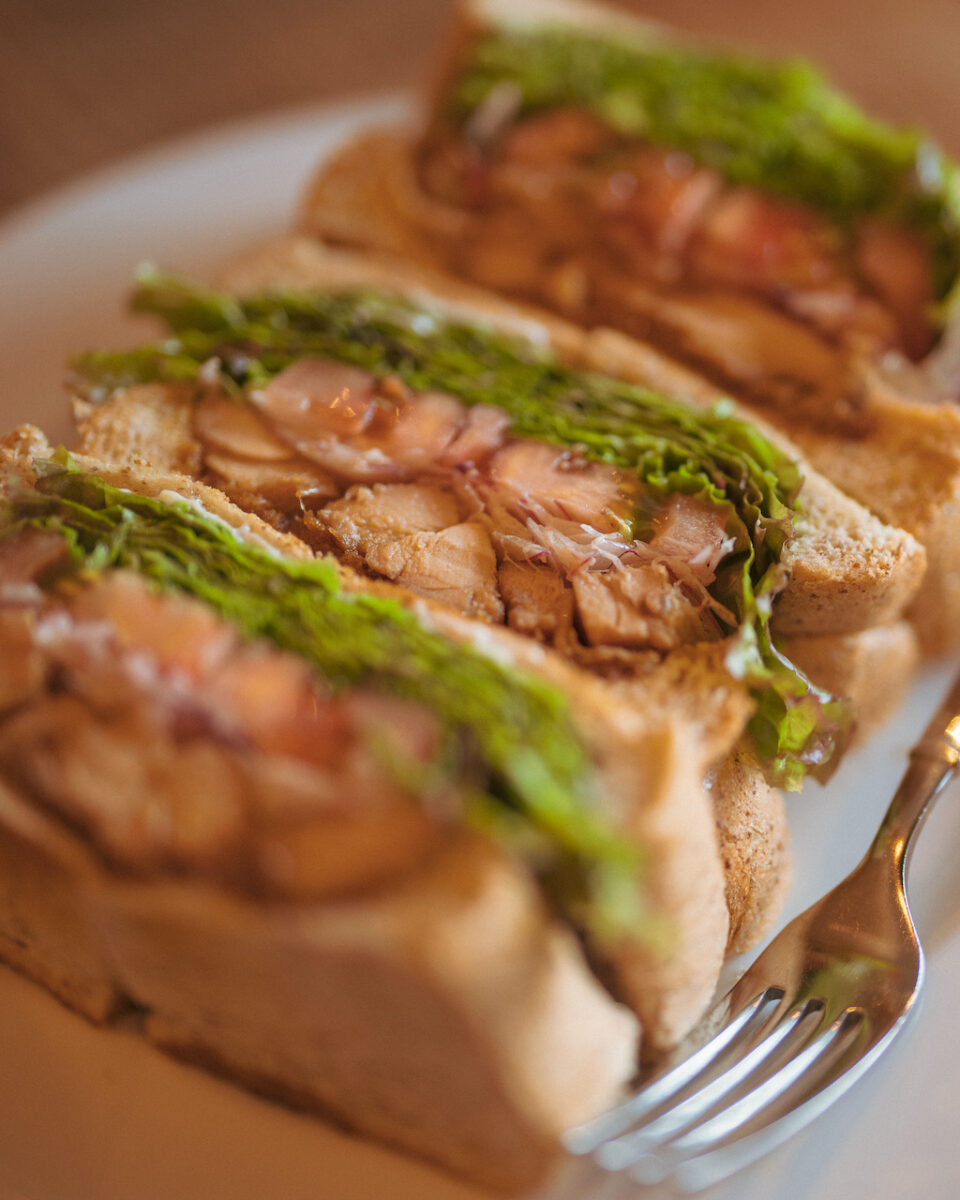
Offering something that can be only enjoyed here.
The store is located a ten-minute walk away from the nearest station and the store doesn’t have any parking. It’s not a great location, but people make a line not only on weekends but also on weekdays depending on the season. Although it is a coffee roaster that only sells specialty coffees and roasts coffee in-house, many customers who visit the store don’t order coffee.
These customers are eyeing the sandwiches, French toast, and other food items. All of the sandwiches sold are over 1,000 yen (US$ 9) which is not necessarily affordable, but there is an incessant flow of customers coming in. One of the most popular sandwiches is the BLT. People say that a large portion of sandwich stuffing balances well with the toast and that the compatibility between the taste of bacon and its sauce is great.
Kawakami, who opened the store in 2014 says, “I don’t like it when people think I only do coffee.
I wanted to make sure that all the items we offer on our menu, including sandwiches and pastries, are better than those specialty stores. I feel that way because I don’t like to give up and I am a competitive person. I have been confident that whatever I make will be delicious, and I’ve always wanted to offer something that can be only enjoyed here, something that no one else can copy.”
There is no compromise in Kawakami’s pursuit of great food and his quest for better food is uncompromising. For example, in the case of the teriyaki chicken sandwich, he would change to better quality chicken or adjust the grilling time to make the grilled chicken fluffy. He states that he constantly updates his food menu to make items even better.

He states, “But what I want to promote the most is the coffee. Most people say, ‘The sandwiches and French toast are delicious,’ so I am happiest when someone says first, ‘The coffee is delicious.’ A lot of people tell me, ‘I haven’t had coffee much before, but I can have it here,’ so I want to increase the number of the people who say that.”
“That’s why I feel sad when a customer orders a sandwich and he/she says, ‘That’s all.’ Well, I should be grateful that people say something is delicious for whatever reason. Since we serve seven kinds of sandwiches and three kinds of French toast, if you say I’m contradicting myself, you’re right. My staff often say to me, ‘Why don’t you just have one kind of sandwich?’ It’s a luxurious problem.”


A cup of coffee that changed his life.
It was a coffee shop that roasts coffee in-house which led him to enter the world of coffee in the early 2000s when he was 23 years old. He knew that cafes were popular, but he was not particularly interested in them. He liked coffee, but only to the extent that he liked canned coffee.
Kawakami states, “The coffee I drank at the shop was an ordinary original blend, but it was surprisingly delicious. Driven by the desire to make my own coffee, I called the shop for a job position that night and they hired me. That was the turning point of my life.”
At that time, Kawakami was working part-time at a pachinko parlor and as a blue-collar worker earning money just to survive. He was growing impatient with himself for not having a regular job yet, but he didn’t think he wanted to be a salaryman (salaried man) or that he was suited for it. He couldn’t find a lifestyle he wanted to lead. The day came when his internal conflict was finally resolved.

“I guess I had too much energy in those days when I had no dreams or hopes. I tried to do my best at the café so that I could be entrusted with the manager’s role, and I just worked hard. I was not very good at customer service in the beginning and there were times when I thought about quitting right away, but I told myself that I could not run away. I realized after a while that this was the only job I could do and I think it was when I was 30 years old when I decided that I wanted to open my own store.”
Kawakami worked at the café for thirteen years in all. In addition to working as the manager for the last ten years of his career, he gained experience in everything from coffee roasting and brewing to making cakes, sandwiches, pasta, and omelets for the affiliated stores. He finally opened kawakami coffee roaster in 2014.
“It was tough in the beginning because we didn’t have enough money for running the shop, but the number of customers increased as the years went by, and it surged around the third year. I think that social media like Instagram and Twitter started to be widely used and played a role in it. I was confident that customers would come even if we didn’t advertise and people would know about us by word of mouth.”
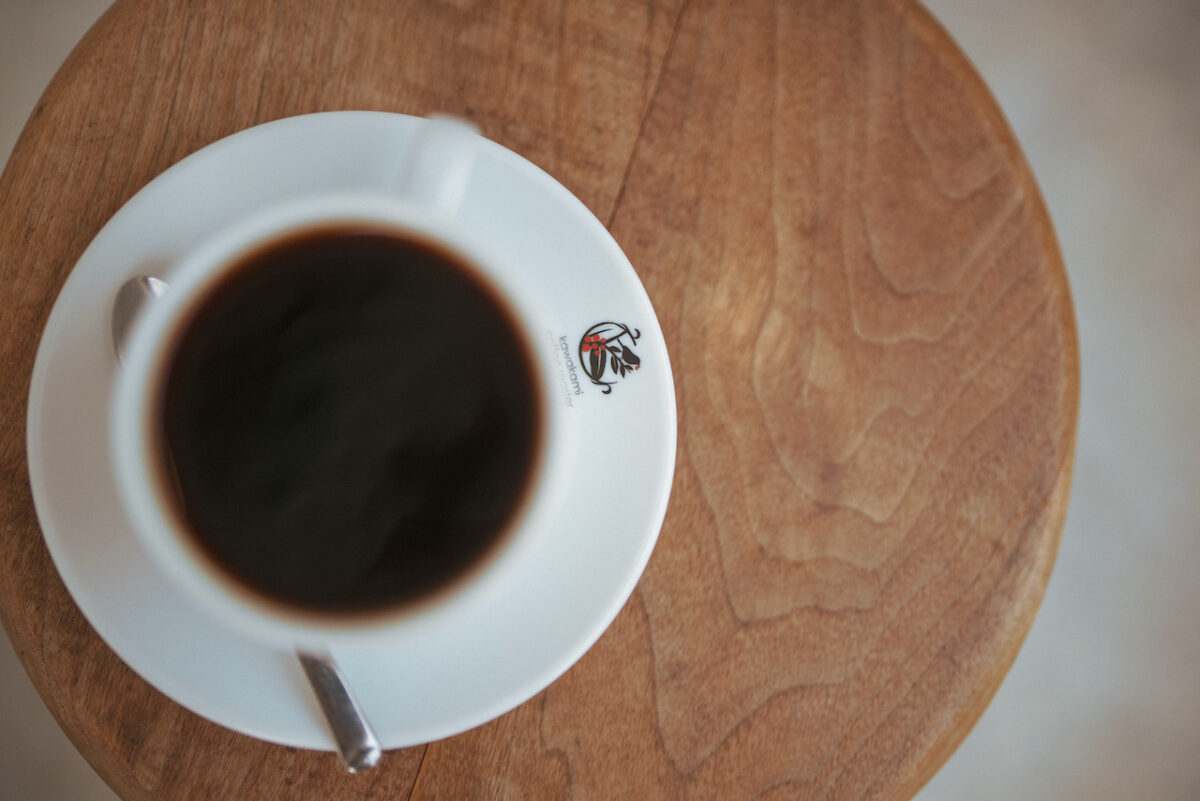
Kawakami had no interest in the world of food service industry at all until he started working at the café.
“I’ve always been good with my hands; I’ve been assembling motorcycles from scratch since I was a teenager. I like to complete something with my own hands. I think I still feel the same way as in the past that it is the driving force for me. For example, I enjoy the time I spend thinking about what flavor I can create by combining this and that.”


From café to the coffee shop.
Kawakami didn’t have much trouble attracting customers after starting his business, but the gap between his ideal and reality was troubling him. It had become “a hangout spot” for nearby housewives and students who used it like they would use a chain family restaurant or café. Some mothers would stay at the shop for five to six hours between dropping off their children at kindergarten and picking them up.
To solve this dilemma, Kawakami changed his “customers come first policy.” The number of tables was gradually reduced and seats at the counter were only available, and there were restrictions such as “No more than two people allowed in the shop” and “No preschoolers or younger children allowed.” There used to be three tables at the place where the roasting machine and jute bags of green coffee are.
“We have a sign in front of the counter that says, “Please be quiet” and we even warn people directly in some cases. We are not a café but a coffee shop, so I want people to understand that this is a space to enjoy coffee and food quietly in peace.”

Kawakami’s unattractive and direct attitude must have been apparent. “When he wrote a diary on his blog with direct contents, a restaurant owner commented, “I totally understand you but how can you say it so clearly? (laughs) It’s nice to see it though.”
“I can adapt to others, but I can’t flatter someone or say compliments out of obligation (laughs),” says Kawakami, who is still deeply influenced by the philosophy of the café where he used to work. The café was running based on the idea that “We should be grateful to our customers for coming to us,” and was committed to providing good food at a reasonable price.
That’s also the reason the shop offered a breakfast menu of “a coffee with bakery” for one coin of 500 yen (US$ 4.5) when the café first opened.
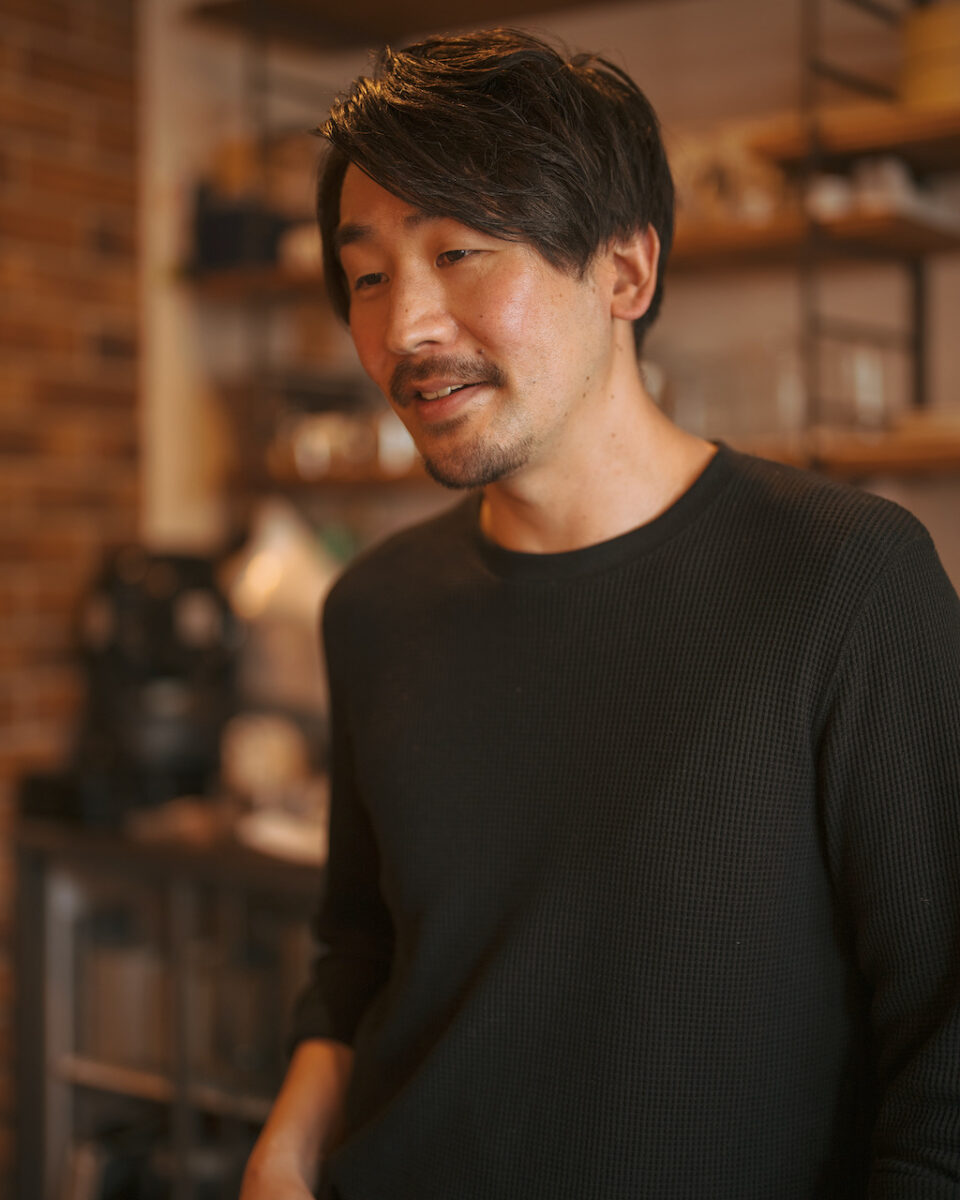
Kawakami states, “My wife and I were the ones who were working, so there was no labor cost, which was also the reason, but the most important reason was that I was very reluctant to charge a high price.”
They have raised their prices several times in small increments and some customers have stopped coming saying that they are disappointed or can’t stay long. On the other hand, some regular customers supported the shop by saying, “It’s natural and makes sense to raise the price because it’s so delicious.”
“It was my own fault after all for creating the image of a place where people could stay longer at a reasonable price by setting low prices,” Kawasaki said.
While going through repeated internal conflicts, Kawakami decided that since he was using good ingredients, he should be paid a certain amount of money for his work and raised the price of all sandwiches from 550 yen (US$ 5) to over 1,000 yen (US$ 10). He eliminated discounts for meal deals and other special offers and started to make all sandwiches to be ordered on a la carte. In addition, he reduced the number of items on the menu, including the elimination of the toast menu, to make the shop aligned with his style.
There are regular customers who compliment him saying, ‘This price is too low for this quality’ and others say, ‘Let me tell you something, I don’t like waiting in line, so can you make the price of coffee 1,000 yen? I will make sure to come here everyday.’ These words are proof that Kawakami was right in his style in creating his shop.
“I feel that people who understand me can understand me. However, I don’t want to forget the customer’s point of view. I also want to take care of customers who say, ‘Coffee is all the same’ and customers who come to the shop to eat in. It would be a shame to let the skills I’ve developed lie dormant, so I have no intention of stopping serving sandwiches.”
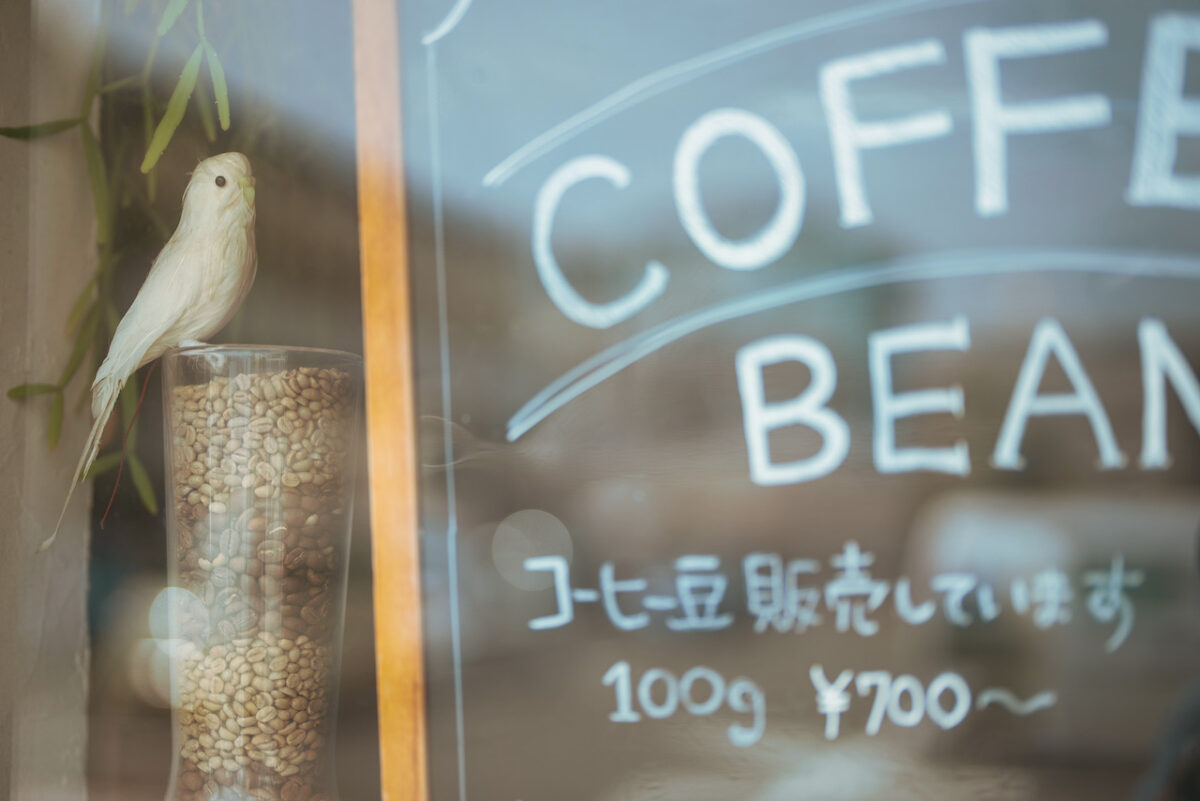
Because he never wants to compromise the quality of what he serves, he is very bad at leaving things to others, but he has reached a new stage in his career in recent years. In his management role he has gradually increased the number of areas he entrusts to others such as letting the staff do what they want to do.
Kawakami states, “Because I was able to do many things at the café, I want to let the staff do many things so that they can spend the time they are working in a meaningful way. Although it’s still at a planning stage, I would like to open a second shop where young staff can get involved and play more roles. I’m the type of person who travels whichever way the wind carries one and I’m not sure how it will turn out though. (laughs).”
Originally written in Japanese by Tatsuya Nakamichi.

MY FAVORITE COFFEE
The coffee I drink at home on my day off is my favorite coffee. It tastes even better when I am feeling relaxed and having a coffee without thinking about anything. The first cup is coffee by itself, and I usually drink the second cup with breakfast. I use a Kalita mill and coffee pot, but the brewing process is the same as when I serve customers at the shop. I don’t want the taste to be blurred even if I am having coffee in my spare time.

kawakami coffee roaster
- [Open]
- 10:00ー11:00